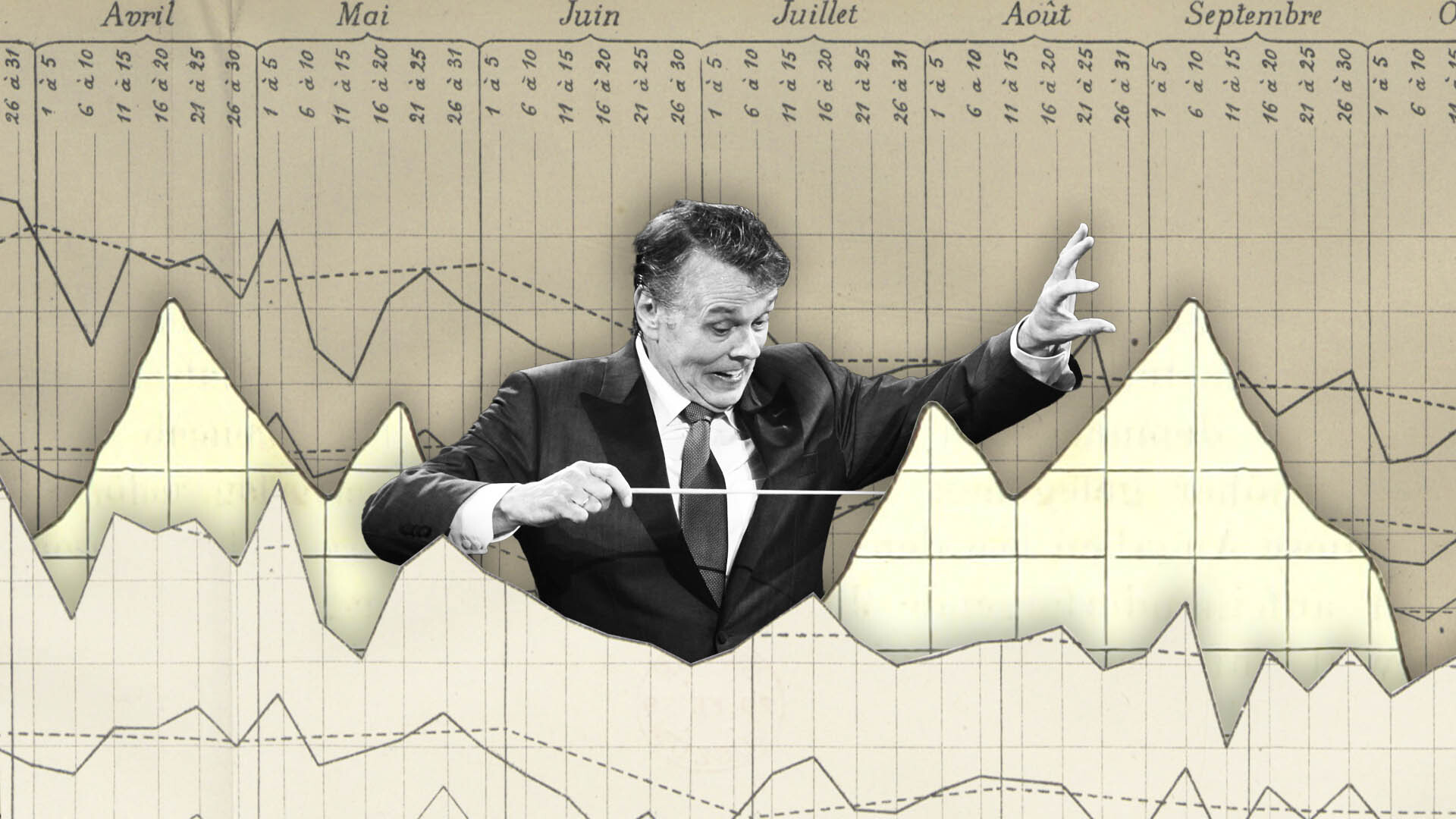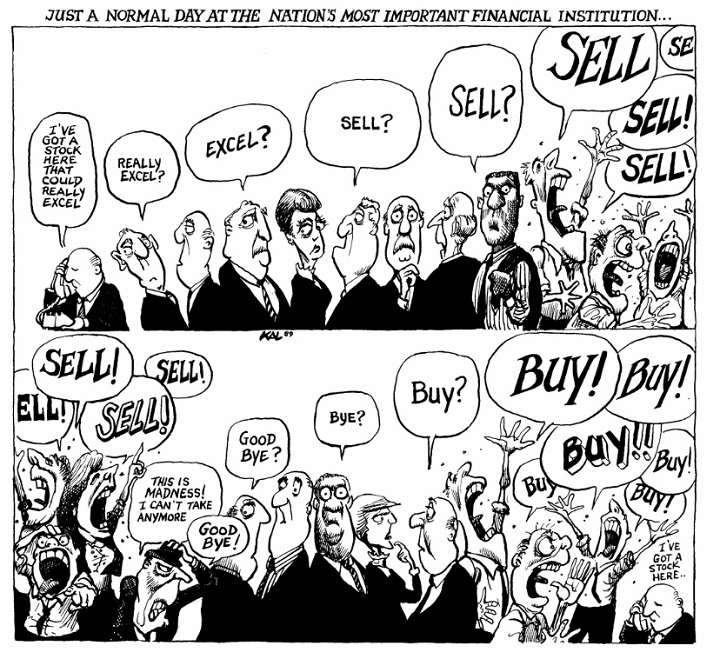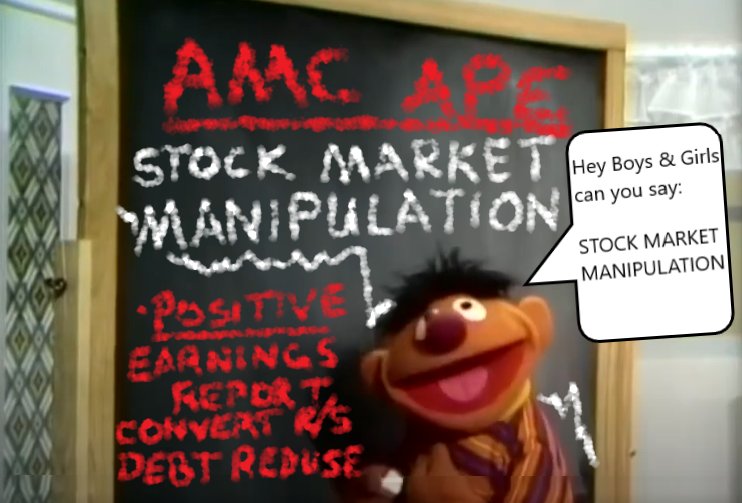Who is to blame for this?
Things SEEMED to be going well into yesterday’s close but now we’re right back to the lows – as if the end-of-session rally was nothing but BS – engineered to fool retail suckers into running back in, in case they miss the “rally“. As I said to our Members at 4pm yesterday:
“Nice recovery into the close – Nas with a big move back up. Still, it’s Monday so we’ll see what happens once the week really starts.”
Monday’s are often meaningless in the markets – they are generally low-volume, low news and low earnings days with very little conviction but what we can see in the last month of Mondays is a pretty clear pattern of pumping up the market on low volume, followed by selling in much larger volumes. This is called “Pump and Dump” and it’s how Wall Street dumps its stock on Main Street.
Here’s Jim Cramer, happily explaining how he manipulated the market when he had a hedge fund – now he has a TV show!
- 🤓 Jim Cramer, a former hedge fund manager and a current TV host, admits that he used to manipulate the stock market by creating artificial activity in the futures market to drive the prices up or down according to his positions.
- He says that this is a fun, lucrative, and legal game that he would encourage anyone in the hedge fund game to do, because there is nothing that is really illegal except for insider trading.
- He also reveals that there are other games that are played on Wall Street, such as marking up the positions at the end of the quarter to make the performance look better, and that these games are not for the benefit of the individual investor.
- He implies that the individual investor is playing against the house, which has more cards than them and can overwhelm them even if they have a good idea.
🤓 Here are some recent examples of stock market manipulation:
- In 2019, the Securities and Exchange Commission (SEC) charged 18 traders in a scheme to manipulate more than 3,000 U.S.-listed securities for over $31 million in illicit profits1. The traders allegedly used multiple accounts to place large orders on one side of the market to create artificial price movements, and then quickly canceled them and traded on the opposite side to take advantage of the price changes. This is a form of market manipulation known as spoofing or layering.
- In 2022, two former JPMorgan metals traders were found guilty in a landmark trial over futures market manipulation2. The traders were accused of using spoofing to artificially lower the price of silver futures and options contracts, and making illegal profits while harming other investors and restraining competition. They were convicted on multiple charges including fraud, spoofing, and attempted market manipulation.
- In 2023, the SEC brought an enforcement action against an equity firm Montgomery Street Research for engaging in wash trading3. The firm’s owner allegedly manipulated the market for a publicly traded stock that he was soliciting investors for. He conducted approximately 100 wash trades, which involve the near-simultaneous purchase and sale of a security to make it appear actively traded, without any actual change in ownership. The SEC alleged that he used wash trading to raise more than $2.5 million from investors.
👺 Other popular manipulation strategies:
- Spreading false information – Bad actors may spread false or misleading information about a company to drive the stock price up or down. This could involve fabricating news, falsifying financial data, or making unfounded claims about a company’s prospects.
- Analyst recommendations – Unethical analysts may issue favorable ratings on stocks in exchange for compensation from companies hoping to drive up share prices.
- Pump and dump schemes – Promoters hype up a stock using misleading news and claims to “pump” up prices, then “dump” shares once prices rise.
- Cornering – Attempting to gain control of a large portion of a company’s available shares to force up the price. Once prices rise, the cornerer sells their shares.
- Bear raids – Traders aggressively short sell a stock to drive down prices and shake out existing shareholders, allowing them to cover their shorts at lower prices.
- Improper short selling – Naked short selling without borrowing shares or failing to deliver shares within trading regulations. This can flood supply and depress share prices.
- Spoofing and layering – Placing fake orders to artificially move prices up or down then canceling them once profit is made from the price shift.
- Churning – An unethical broker intentionally causes excessive trading in a client’s account to generate higher commissions.
 The market IS manipulated – that’s a fact. Still, for our purposes, the manipulation is simply another Fundamental factor we take into account. Once again, PATIENCE is our friend – we don’t react to every twitch in the market and our 5% Rule™ does the math for us and lets us know whether a rally or reversal has any legs to it.
The market IS manipulated – that’s a fact. Still, for our purposes, the manipulation is simply another Fundamental factor we take into account. Once again, PATIENCE is our friend – we don’t react to every twitch in the market and our 5% Rule™ does the math for us and lets us know whether a rally or reversal has any legs to it.
We don’t take low-volume moves seriously and we don’t take quick moves seriously – unless there has been some change in the underlying fundamentals. The stock market may seem like a level playing field, but the reality is retail investors are often at an inherent disadvantage when it comes to detecting and reacting to market manipulation strategies deployed by institutional players.
 While sophisticated funds have high-powered analytics at their fingertips to sniff out unusual trading patterns in real-time, everyday investors are left relying on delayed quotes through traditional brokers. Before they even realize what has happened, the game has already been rigged against them.
While sophisticated funds have high-powered analytics at their fingertips to sniff out unusual trading patterns in real-time, everyday investors are left relying on delayed quotes through traditional brokers. Before they even realize what has happened, the game has already been rigged against them.
Just look at tactics like pump and dump schemes. Hedge Funds have the capital and connections to spread misleading information or hype up stocks through media outlets and analyst recommendations, pumping up prices before dumping shares once unsuspecting retail traders jump on board. Professional manipulators can utilize complex strategies like spoofing, layering, naked short selling and bear raids under the radar due to their superior trade execution capabilities and massive volumes required to move markets to their advantage.
Retail investors typically lack the resources to counter such large-scale manipulation in real-time. With only limited capital and no ability to coordinate and execute trades at lightning speed, retail traders end up the losers in these scenarios. To add insult to injury, insider trading regulations do little to constrain external collaborators who may jointly exploit their unfair edge.

So what’s an everyday investor to do in a system stacked against them? This is where communities centered around education, empowerment and enlightened self-interest come in. The core premise of communities like PhilStockWorld is providing our Members the tools to circumvent manipulation traps. By fostering discussions around identifying coordinated trading patterns and unusual activity, members become more attuned to spotting manipulation attempts and resisting the urge to chase false trends.
 Education is power in this context. Learning techniques like utilizing volume analysis and mathematical rules provides objective measures to confirm questionable price action. Members are taught to adhere to disciplined investing principles focused on long-term Fundamentals over reacting to short-term distortions. Developing a nuanced understanding of how to deploy technical indicators also helps identify atypical price movements early.
Education is power in this context. Learning techniques like utilizing volume analysis and mathematical rules provides objective measures to confirm questionable price action. Members are taught to adhere to disciplined investing principles focused on long-term Fundamentals over reacting to short-term distortions. Developing a nuanced understanding of how to deploy technical indicators also helps identify atypical price movements early.
While retail investors may not have an outsider’s advantage in detecting manipulation, the wisdom of crowds within an investing community can help level the playing field. The collective intelligence of experienced members pooling insights provides an early warning system to counter malicious schemes. There is power in banding together rather than being divided and deceived.
Trading Communities emphasize diversification across uncorrelated assets and prudent position sizing as additional means of protection. When Members avoid excessive concentration in easy targets for manipulation like small illiquid names, it shrinks the playground available to would-be manipulators. Fight back by refusing to be an easy mark.
The reality may be that market manipulation is rampant and retail investors are juicier targets for those playing by a crooked rulebook. However, by arming yourself with knowledge, surrounding yourself with a supportive community, and sticking to sound investing principles, you can take back control and invest on your own terms. The house may still have an edge, but it doesn’t have to keep winning.







